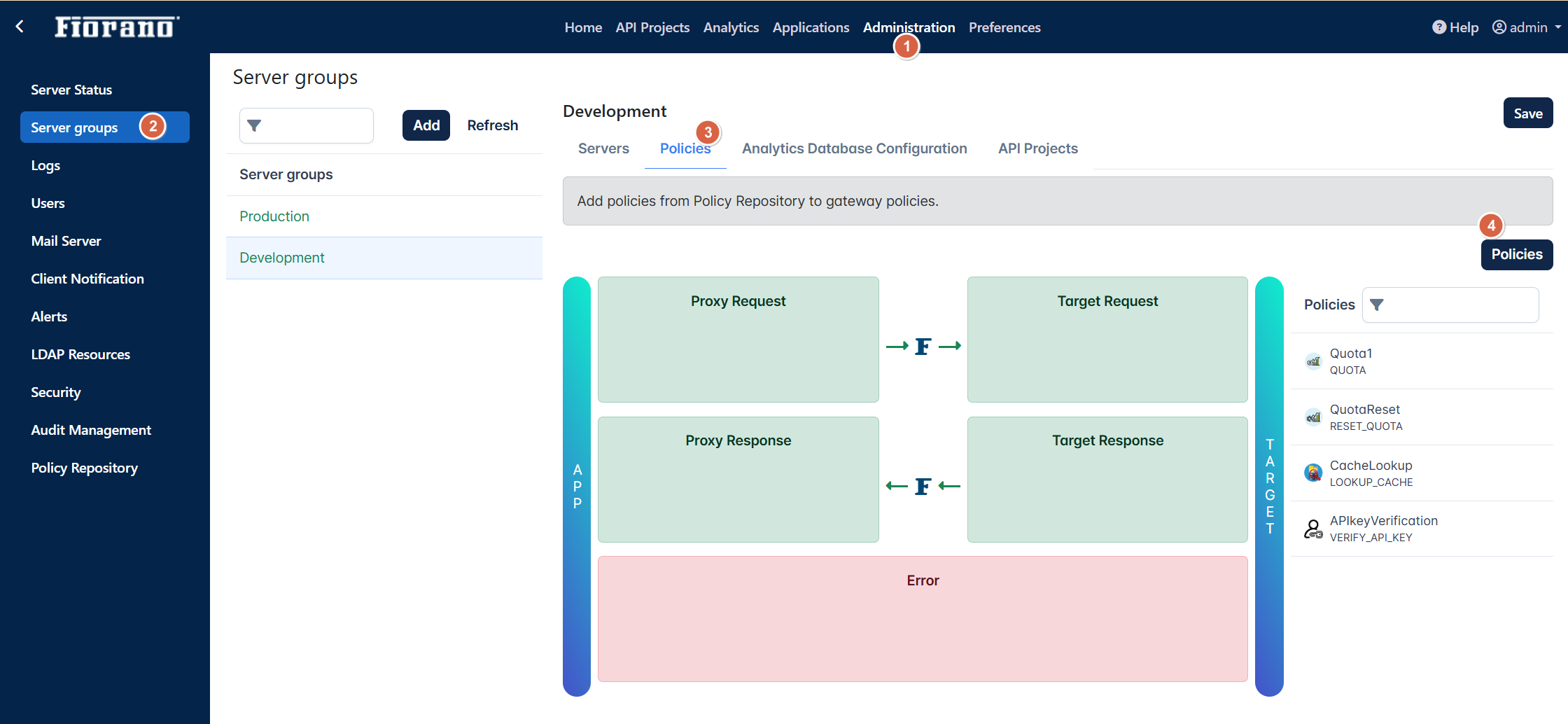Server Groups
What is a Server Group and Why is it Needed ?
Server Groups play a central role in API deployment as they provide
- a way to define a cluster of gateway servers to deploy the projects.
- a mechanism to manage the API lifecycle.
- the possibility to have different levels of access to different types of clients.
To scale the API project to multiple proxies for ease of request handling and load balancing, it may be necessary to deploy the same API Project at multiple Gateways (Proxies). To achieve this objective, Server Groups can be added to a project; adding gateways to a server group will help deploy a project on various environments.
Managing Server Groups
Click the icon on the left side of the screen to open the Server Groups page. This view allows creating a Server Group by adding gateway servers on which projects may be deployed.

Figure 1: Administration section with the Server Groups page displayed
Default server groups
Production and Development Server Groups will be present under the Server Groups section by default.
Default gateway servers
The gateway servers "apigateway1" and "apigateway" are assigned to Product and Development server groups, by default, respectively.
Adding a new server group
To add a new server group, click the Add button, and type the name of the new server group to be added. Select the newly added server group name to get the configuration section.
Refer to the Creating a Server Group for Project Deployments section for instructions on how to add a Server Group.
Start the newly added server so that it can be assigned to a server group.
Working with the gateway servers
Click the Save button to save the changes. For the changes to be saved successfully, every server group must have at least one server added to it.
Click the Server Group name to see the servers available/added.
- Servers: Lists the servers already added.
- Available Servers: Lists the servers available that may be added.
Ensure AGS is running, as at least one Gateway Server must be running.
- When a server is added to a group, the projects deployed on the particular group/environment will be automatically deployed on the server.
- The server in the Available Servers section can be used for the new server group by moving it to the Servers section.
- Use the left and right arrow buttons to move the servers.
- To revert the changes made in the Server Groups view, click the Reset button before saving
- To remove a server group, select the particular group name and click the Remove button.
Adding a policy to a server group
A policy saved in the policy repository can be added to a server group.
- Select the server group from the Server groups list.
- Go to the Policies tab.
- Click the Policies button.
- Drag and drop the policy to the scope.

Configuring Analytics Database
The Analytics Database Configuration section in the Server Groups page is used to configure the database which in turn is used to save the Analytics data. The API Management uses PostgreSQL DB Server as the Analytics database where all analytics data being tracked at the proxy are stored and subsequently fetched for processing.
To configure Analytics database:
Install and configure PostgreSQL.
Refer to the Configuring Analytics Database section for details. This section illustrates configuring the database using eStudio and configuration files as well.
- Select the environment (Server Group) for which the Analytics database needs to be configured.
- Provide the values for the Analytics Database Configuration properties; other than the credentials for the JDBC driver, provide values for the below:
- Try Reconnect Interval: Interval (in secs) after which the Stored Procedure tries to reconnect with the DB in the event of a connection loss.
Auto Reconnect: Select true or false to specify whether the Stored Procedure should try for an automatic reconnection with the DB or not.

Analytics Database Configuration properties
